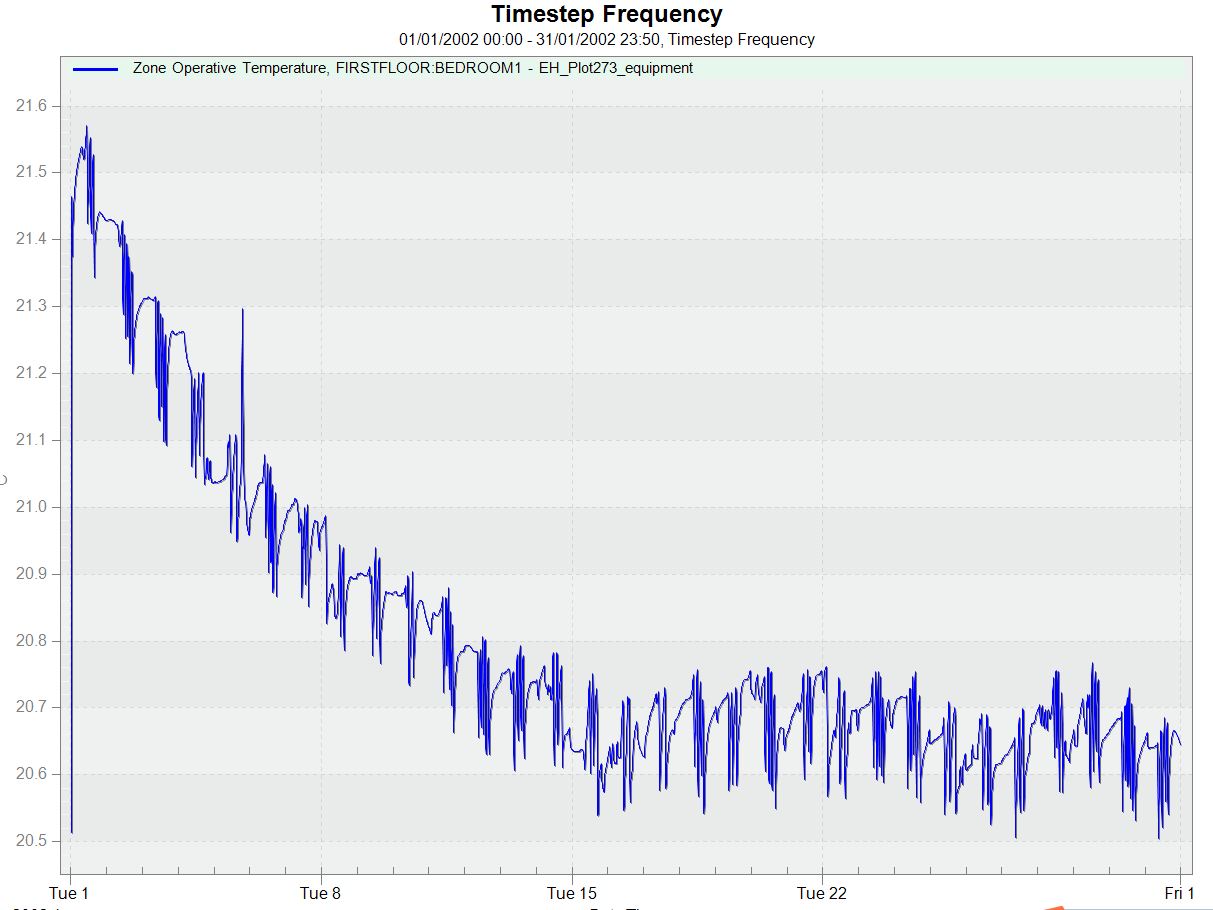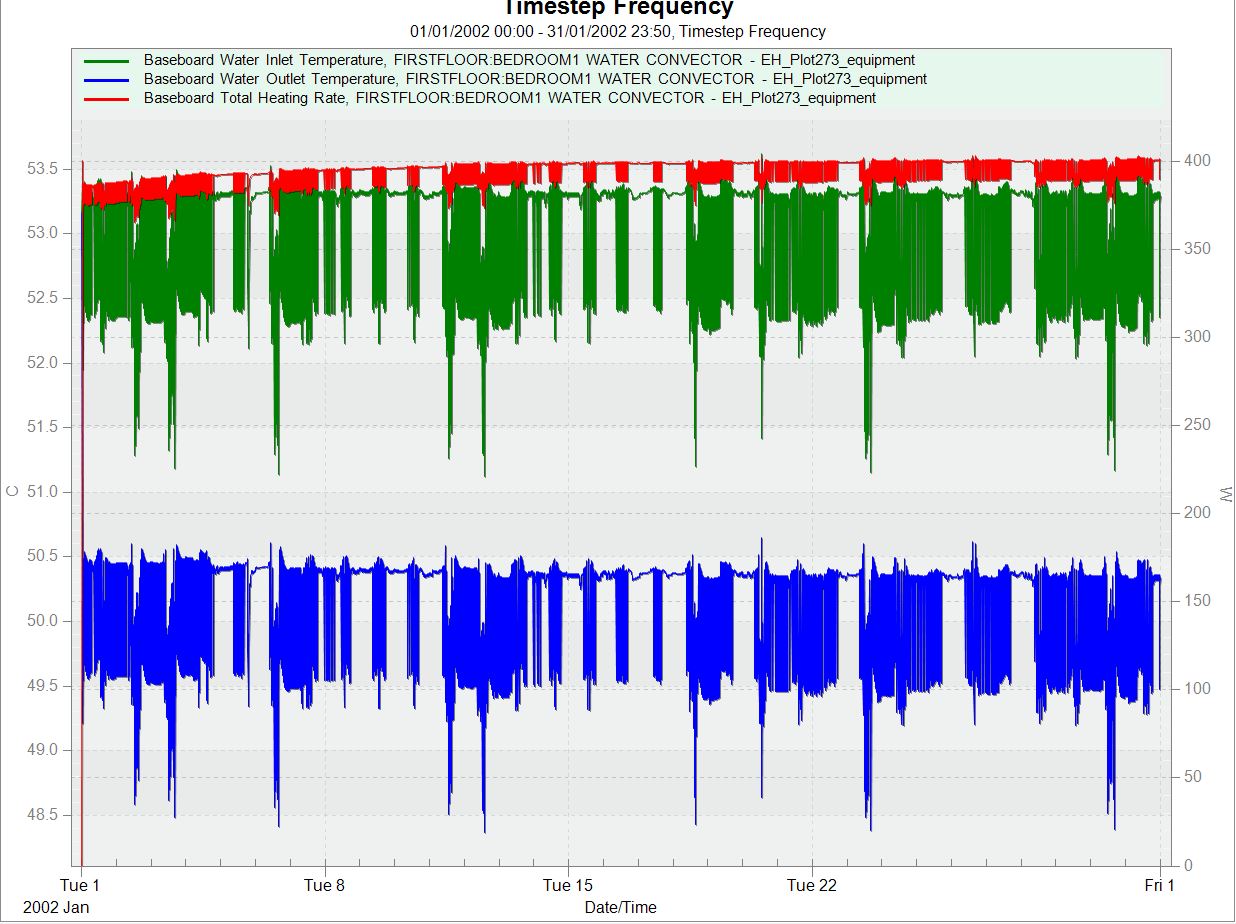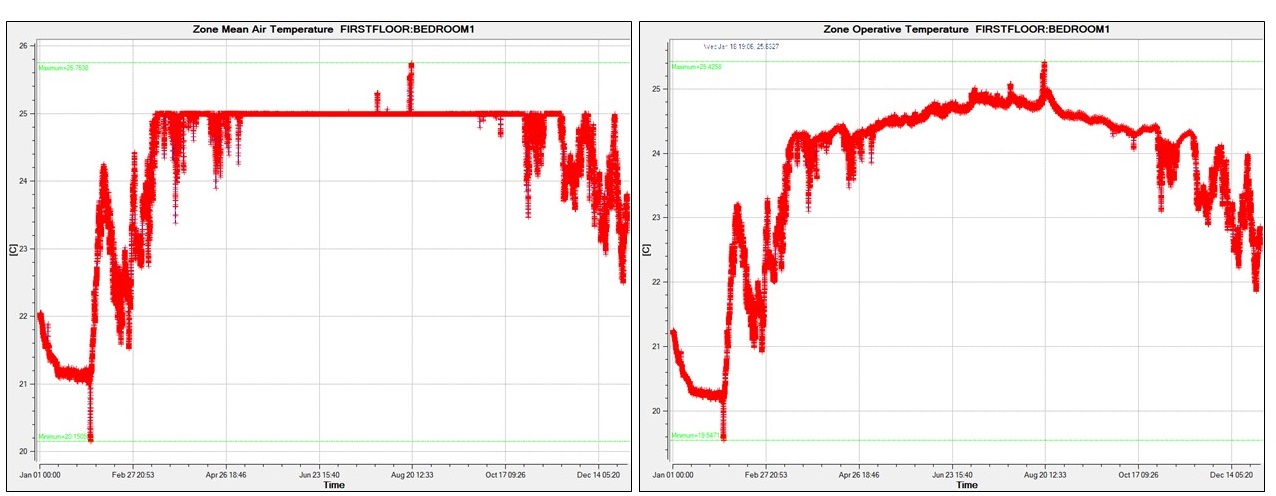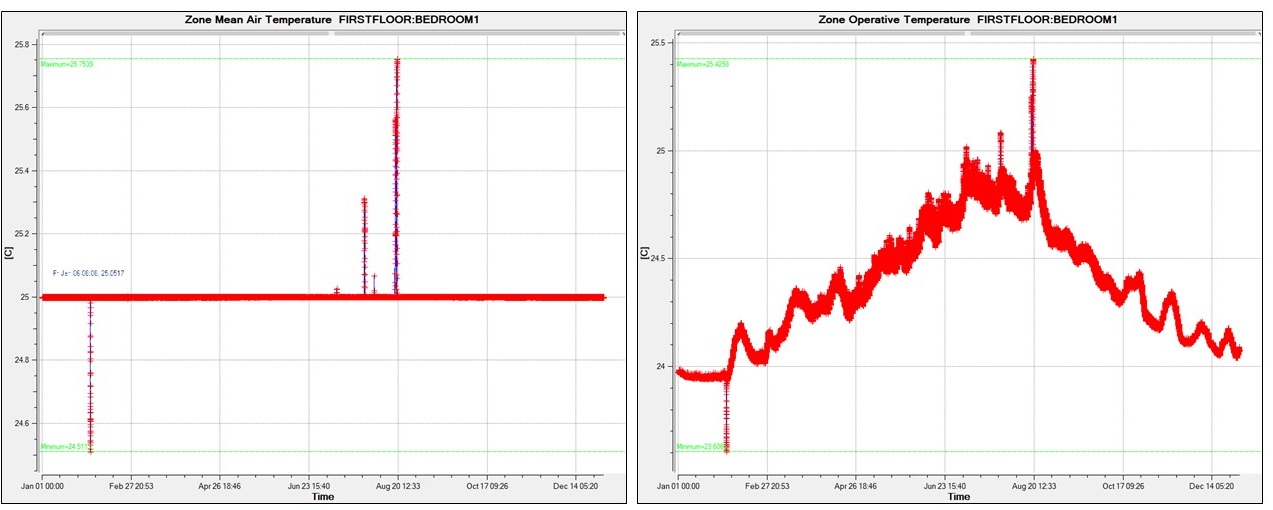house indoor temp could not be met
Dear All,
I am using a Air sourced heat pump for a house heat source, with ground floor(heated floor heating), first floor(water convector), and I've changed the outdoor temp always equal to Zero(constant number), and indoor thermostatsetpoint (heating) is set to 25C, simulation running period is whole Jan.
However, when I finish the simulation and looking at the results, it never reach 25C (none rooms).
- I am wondering is there any dead band or acceptable range of the desire temperature in EP+, +- 5 degrees?
- I've made some changes in the capacity of the heat pumps/fans, but it did not seems could increase the temp.
 .
.









@nancynanxiaodan Did you check to see if your heated floors are working as they are supposed to?
@rsunnam Hi Raghu, many thanks for looking at my questions. the temp shows above is the firstfloor one room temp which used convective water radiator as the heat emitter, I've checked all rooms in ground floor which all had reasonable temp around 24.5.
@nancynanxiaodan OK got it. Without knowing any further details about all the systems conditioning the first level zones, I would start checking all the internal gain, schedules (internal gains and thermostats). I would also check that the envelope properties are correctly modeled. If all that is fine, I would focus on the specific HVAC components (radiators in this case) and the plant side for these components. Make sure that the hot water temperatures are modeled correctly. You can check the functioning of the radiators by looking at the"baseboard total heating rate variable" in the eso file
@rsunnam for this model, I removed all internal gains(equipment, people, lighting) except for solar gains. I've attached the results am getting regarding the baseboard.
@nancynanxiaodan OK. I am not exactly sure what is happening based on this. If you wish, I can take a look at the model and see if I can find something. My email id is in my profile.